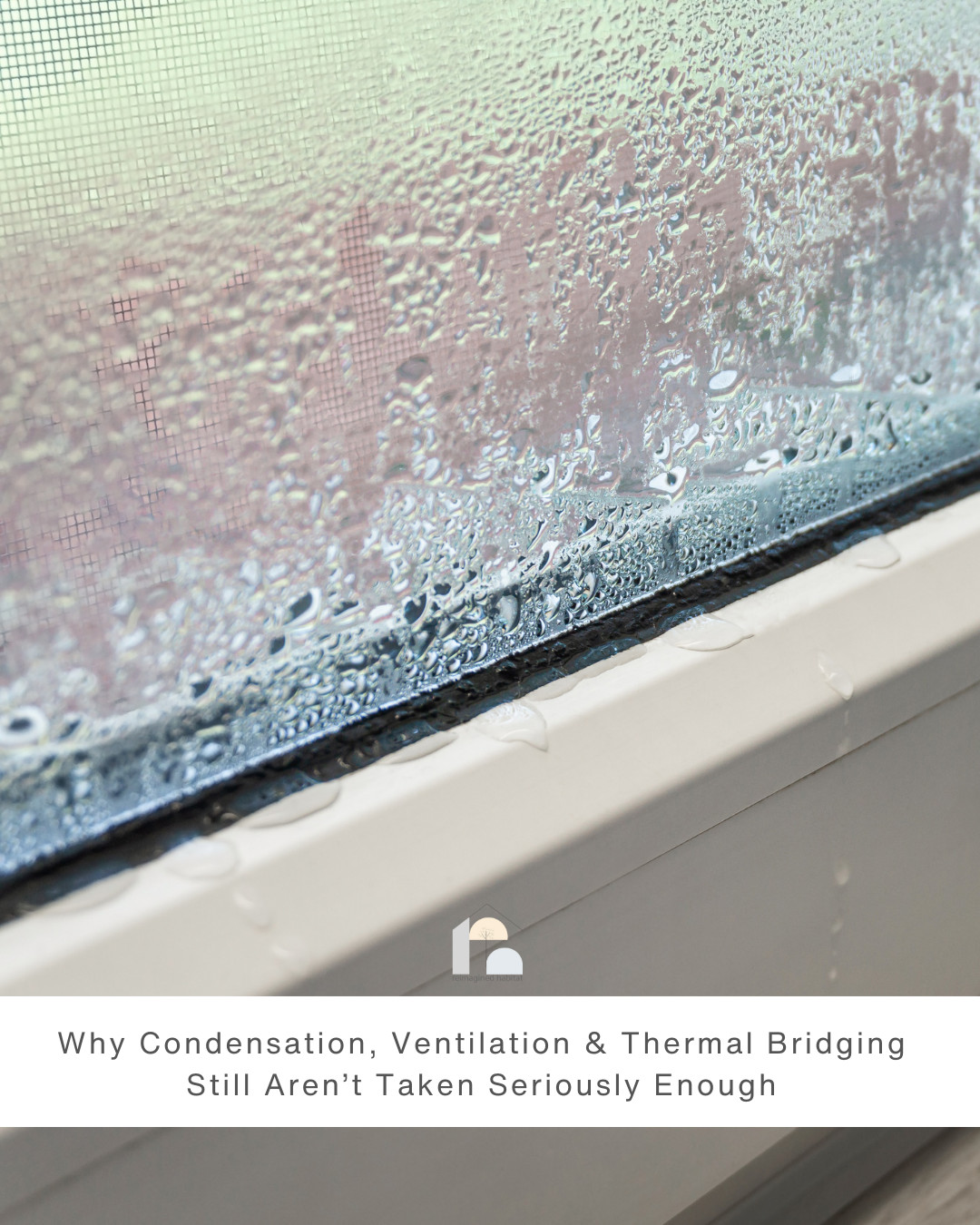Why Condensation, Ventilation & Thermal Bridging Still Aren’t Taken Seriously Enough

There’s a whole chapter in the National Construction Code dedicated to condensation management, ventilation, and airtightness—but most builders and designers still don’t understand it. Why? Because it’s written by building physicists for building physicists. The result? Critical health and performance issues are often missed entirely.
From moisture management to hygrothermal modelling and thermal bridging, these aren’t just theoretical concepts—they directly impact mould, respiratory health, and energy efficiency in our homes.
🔍 Common oversights we’re still seeing:
- Ventilation systems are poorly specified or completely forgotten
- Thermal bridging details left unresolved until the Passive House certifier reviews
👉 And even worse — when a project isn’t aiming for Passive House certification, these issues are typically completely overlooked.
- Incomplete understanding of off-gassing and VOCs in standard materials
- Solar panels installed without considering climate resilience (e.g., hail damage)
💡 What can we do better?
- Share knowledge and tools across disciplines
- Identify potential thermal or moisture issues early in the design process
- Use existing databases like the Red List, EPiC or TCCC for materials and embodied carbon
- Be realistic about what builders need to actually construct the details we specify
We’re moving toward a future of more cyclonic, more extreme weather conditions. Building better isn’t optional—it’s essential.
🛠️ So what can we do to reduce condensation, improve ventilation, and address thermal bridging more effectively?
- Design with buildability in mind – Detail junctions and penetrations early, and ensure the builder understands the importance of airtightness and insulation continuity.
- Incorporate mechanical ventilation with heat recovery (MVHR) in all high-performance builds — not just Passive House projects.
- Specify smart vapour control layers and breathable membranes to manage moisture safely through the building envelope.
- Minimise thermal bridges at slab edges, balconies, and window reveals — these are the cold spots where condensation loves to form.
- Educate the whole team — designers, consultants, builders, and certifiers — so that everyone understands how interconnected these issues are.
Getting the basics right makes a massive difference. It’s not just about ticking boxes — it’s about creating healthier, longer-lasting buildings.
